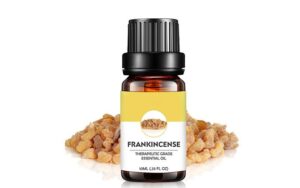
How to Choose the Right Types of Candle Wax?An Ultimate Guide
- December 15, 2023
When you start making candles, it is very important to understand how to choose the right types of wax for your creations. Different waxes, each with unique properties, cater to specific candle types. For instance, paraffin wax, known for its strong scent retention, is versatile for various candle shapes. Soy wax, derived from soybeans, offers a cleaner, longer burn, ideal for container candles. Beeswax, with its natural sweetness, is perfect for eco-friendly pillar candles. And the newer coconut wax, though is more expensive, excels in fragrance holding and minimal soot production.
Our guide aims to simplify your wax selection process, ensuring your candles look and smell great and meet your environmental values.
Table of Contents

Paraffin Wax
Diving into the candle making, you’ll soon discover that paraffin wax is a cornerstone in the industry. Renowned for its versatility and affordability, paraffin wax has long been the preferred choice for various candle types.
Key Characteristics:
High Fragrance Retention: Paraffin excels in holding a significant amount of fragrance, making it ideal for scented candles that fill rooms with their aroma.
Versatility in Forms: With varying melting points, it can be molded into diverse shapes – from elegant taper candles to robust pillars and detailed figurines.
Advantages:
Strong Scent Throw: Its ability to emit scents powerfully and across a large area is unmatched, ensuring a sensory delight in any setting.
Adaptability: Suitable for both container and free-standing candles, paraffin offers candle makers creative freedom.
Considerations:
Environmental Impact: As a byproduct of the oil industry, there are more eco-friendly options than paraffin wax. Its production is linked to fossil fuels, raising sustainability concerns.
Health Aspects: When burned, paraffin can emit volatile organic compounds (VOCs), such as toluene and benzene, and produce soot. Adequate ventilation is advised when enjoying these candles.
Usage Tips:
To minimize soot production, ensure your paraffin candles are well-maintained, with wicks trimmed regularly.
Experiment with different grades of paraffin to achieve your desired candle quality and burning characteristics.
Paraffin wax remains a popular choice for its performance and cost-effectiveness. While it’s not the most eco-conscious option, it is strongly scented and versatile and is the primary material for making candles.
Soy Wax

As the area of candle making grows, soy wax has become popular, particularly for those seeking an eco-friendly alternative. Made from soybeans, this wax boasts several qualities that make it a go-to for many artisans.
Key Characteristics
Eco-Friendly: Soy wax is derived from a renewable resource, making it more sustainable than paraffin.
Burn Quality: Known for burning cleaner and longer, soy wax ensures your candles last, providing a more prolonged aromatic experience.
Advantages
Lower Soot Production: It produces significantly less soot than paraffin, contributing to a cleaner burn and healthier indoor air quality.
Biodegradable: Being a natural product, soy wax is biodegradable, aligning with eco-conscious practices.
Considerations
Fragrance Holding: While less proficient than paraffin in scent retention, soy wax still delivers a pleasant, albeit subtler, fragrance experience.
Temperature Sensitivity: Soy wax can be temperamental with temperature changes, leading to potential issues like frosting or shrinking.
Usage Tips
Wick Management: To optimize burn quality, maintain the wick at an appropriate length.
Container Compatibility: Soy wax is particularly well-suited for container candles, where its properties are best showcased
Beeswax

Beeswax is revered in candle-making and cherished for its natural origins and historical significance. As one of the oldest candle materials, it brings a blend of tradition and quality to your candles.
Key Characteristics
– Natural and Eco-Friendly: Sourced directly from bees, beeswax is completely natural and sustainable, making it an excellent choice for environmentally mindful candle makers.
– Unique Aroma: It possesses a naturally sweet scent derived from honey and floral nectar in beehives, adding a subtle and delightful fragrance to the environment.
Advantages
– Non-Toxic Burn: Beeswax candles emit minimal smoke and soot, providing a clean and safe burn.
– Air Purifying Qualities: It’s believed that beeswax candles release negative ions that help purify the air, making them a healthy choice for indoor environments.
Considerations
– Scent Compatibility: The inherent sweetness of beeswax may not blend well with all types of fragrances, which can be a limitation for scented candle formulations.
– Hardness and Texture: Its firmer texture makes beeswax ideal for shaping into pillars and other free-standing candles.
Usage Tips
– Wick Selection: Opt for a thicker wick to ensure an even burn, as beeswax can be denser than other waxes.
– Blending Options: Consider blending beeswax with softer waxes like soy to enhance its burn quality and fragrance compatibility.
Beeswax stands out for its natural purity and health benefits, making it a timeless choice for candle makers who value tradition and eco-friendliness. Its distinct characteristics offer a unique candle-making experience, appealing to those who appreciate this craft’s finer, more natural aspects.
Coconut Wax

In the realm of candle making, coconut wax is the new entrant that’s quickly gaining admiration. Harvested from the oil of coconuts, this wax stands out for its eco-friendly profile and exceptional qualities.
Key Characteristics
– Sustainable Source: Coconut wax is derived from a high-yield and renewable crop, making it a favored choice among environmentally conscious crafters.
– Superior Fragrance Hold: It excels in retaining fragrances, rivaling even paraffin wax, and ensures a strong and lasting scent throw.
Advantages
– Clean Burn: Known for its clean burning properties, coconut wax produces minimal soot, maintaining the clarity of your candle containers.
– Rich Color and Texture: This wax holds color well and adds a luxurious texture to the candles, enhancing their aesthetic appeal.
Considerations
– Cost Factor: Coconut wax is often more expensive than other types, owing to the limited availability and the cost of raw materials.
– Blending Potential: Many candle makers blend coconut wax with other soy waxes to balance cost and performance benefits.
Usage Tips
– Optimal Fragrance Oil Selection: Pair it with high-quality fragrance oils to maximize its excellent scent-holding capacity.
– Temperature Management: Being a softer wax, it’s crucial to store and handle coconut wax candles in a temperature-controlled environment to maintain their shape and quality.
Coconut wax is the choice for those who seek to blend luxury with sustainability in their candle-making journey. While it may come at a higher price, its benefits in terms of performance and eco-friendliness make it a worthy investment for high-end candle creations.
Wax Blends

In the diversity of candle making, wax blends represent a creative fusion that combines the best traits of different waxes. These blends are crafted to optimize the qualities of each constituent wax, creating a versatile and balanced candle-making material.
Key Characteristics
– Customization: Blends allow for a tailored approach, adjusting properties like scent throw, burn time, and texture to suit specific candle-making needs
– Enhanced Performance: Combining waxes can balance characteristics such as a stronger scent throw from paraffin with the cleaner burn of soy or beeswax.
Advantages
– Versatility: Blends offer the flexibility to create candles that might not be possible with a single type of wax. For instance, a soy-paraffin blend can produce a candle that has a strong scent
– Eco-Friendly Options: Some blends incorporate eco-conscious waxes like soy or beeswax with others like paraffin to reduce environmental impact while maintaining desired candle qualities.
Considerations
– Balancing Act: Crafting the perfect blend requires a balance of properties. Too much of one wax type might overpower the benefits of the other, necessitating experimentation and testing.
– Cost Efficiency: Blends can be cost-effective, especially when combining a more expensive wax like coconut with a more affordable option like soy.
Usage Tips
– Experimentation: Don’t hesitate to experiment with different ratios to find the perfect blend for your candles. Each combination can bring a unique set of properties to your final product.
– Quality Control: Consistency is key. Once you find a blend that works, ensure consistent ratios in your production to maintain uniform quality across your candle line.
Wax blends are the alchemists’ dream in candle-making, offering the ability to fine-tune candles to specific requirements. Whether you’re looking to combine the long-lasting fragrance of paraffin with the clean burn of soy or the natural appeal of beeswax with the luxurious texture of coconut wax, blends open up possibilities for amateur and professional candle makers alike.
Making the Right Choice

Deciding on the right wax for your candle-making endeavors is more than just a technical choice—it reflects your artistic vision, environmental values, and the experience you wish to provide to your customers.
Factors to Consider
– Type of Candle: Consider the candle’s form, such as pillar, container, or votive, as different waxes suit different styles.
– Fragrance and Color Needs: Some waxes hold scents and colors better than others, influencing the sensory appeal of your candles.
– Eco-Friendly: If sustainability is a core value, prioritize waxes like soy or beeswax or consider blends that reduce environmental impact.
– Cost and Accessibility: Factor in the availability and cost of waxes, especially if you are planning large-scale production
Conclusion
The choice of wax can significantly impact the quality, burn time, fragrance, and overall appeal of your candles. Understanding each wax type’s unique properties and trade-offs is crucial in making an informed decision that aligns with your candle-making goals.
Remember, the ultimate goal is to create a candle that not only lights up a room but also encapsulates the essence of your craftsmanship and ethos. Whether you choose a single type of wax or venture into blends, the key lies in how well your choice resonates with your artistic vision and your customers’ needs.
Request A Quote for Your Custom Scented Candle
Related Blogs


What Are the Benefits of Frankincense Oil

